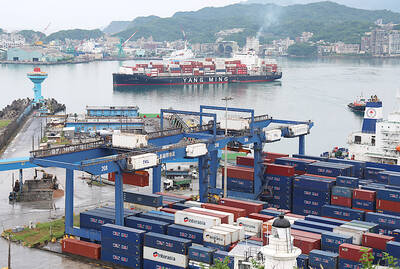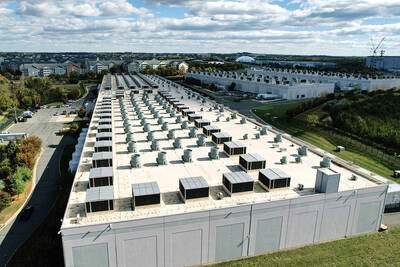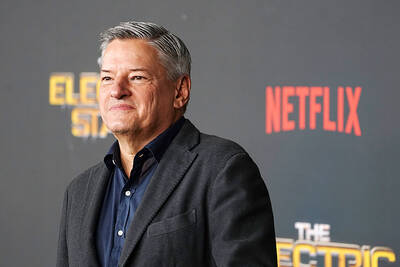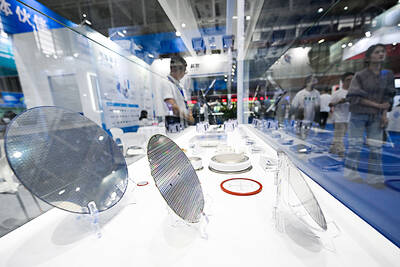Pfizer Inc posted videos online on Saturday in its latest effort to win over critics of its proposed purchase of British drugmaker AstraZeneca PLC.
In four videos on Pfizer’s Web site, CEO Ian Read sought to allay concerns that the deal would lead to a loss of stature in science in the UK. He said Pfizer had expanded its research in Cambridge, Massachusetts, and envisions pursuing a similar strategy for Britain’s Cambridge, north of London, where many scientists work.
Pfizer has been trying to buy its British rival since January, but has been rebuffed three times.
AstraZeneca has said Pfizer’s latest offer of US$106 billion in cash and stock undervalues the company and that a takeover would disrupt its work on a potentially lucrative pipeline of new drugs.
The proposed deal would be the largest foreign takeover of a British company. It has drawn scrutiny from politicians on both sides of the Atlantic who fear a loss of jobs.
The deal would include Pfizer moving its official domicile — but not its corporate offices — to London. That would reduce Pfizer’s income tax rate, because US rates are considerably higher than those in the UK.
Earlier this month, Pfizer sent a letter to British Prime Minister David Cameron promising to keep at least 20 percent of the combined company’s research and development staff in the UK. The letter also called the “golden triangle of Oxford, Cambridge and London” — where the bulk of British scientific research is based — a vital component of the deal.

Taiwan’s exports soared 56 percent year-on-year to an all-time high of US$64.05 billion last month, propelled by surging global demand for artificial intelligence (AI), high-performance computing and cloud service infrastructure, the Ministry of Finance said yesterday. Department of Statistics Director-General Beatrice Tsai (蔡美娜) called the figure an unexpected upside surprise, citing a wave of technology orders from overseas customers alongside the usual year-end shopping season for technology products. Growth is likely to remain strong this month, she said, projecting a 40 percent to 45 percent expansion on an annual basis. The outperformance could prompt the Directorate-General of Budget, Accounting and

The demise of the coal industry left the US’ Appalachian region in tatters, with lost jobs, spoiled water and countless kilometers of abandoned underground mines. Now entrepreneurs are eyeing the rural region with ambitious visions to rebuild its economy by converting old mines into solar power systems and data centers that could help fuel the increasing power demands of the artificial intelligence (AI) boom. One such project is underway by a non-profit team calling itself Energy DELTA (Discovery, Education, Learning and Technology Accelerator) Lab, which is looking to develop energy sources on about 26,305 hectares of old coal land in

Netflix on Friday faced fierce criticism over its blockbuster deal to acquire Warner Bros Discovery. The streaming giant is already viewed as a pariah in some Hollywood circles, largely due to its reluctance to release content in theaters and its disruption of traditional industry practices. As Netflix emerged as the likely winning bidder for Warner Bros — the studio behind Casablanca, the Harry Potter movies and Friends — Hollywood’s elite launched an aggressive campaign against the acquisition. Titanic director James Cameron called the buyout a “disaster,” while a group of prominent producers are lobbying US Congress to oppose the deal,

Two Chinese chipmakers are attracting strong retail investor demand, buoyed by industry peer Moore Threads Technology Co’s (摩爾線程) stellar debut. The retail portion of MetaX Integrated Circuits (Shanghai) Co’s (上海沐曦) upcoming initial public offering (IPO) was 2,986 times oversubscribed on Friday, according to a filing. Meanwhile, Beijing Onmicro Electronics Co (北京昂瑞微), which makes radio frequency chips, was 2,899 times oversubscribed on Friday, its filing showed. The bids coincided with Moore Threads’ trading debut, which surged 425 percent on Friday after raising 8 billion yuan (US$1.13 billion) on bets that the company could emerge as a viable local competitor to Nvidia